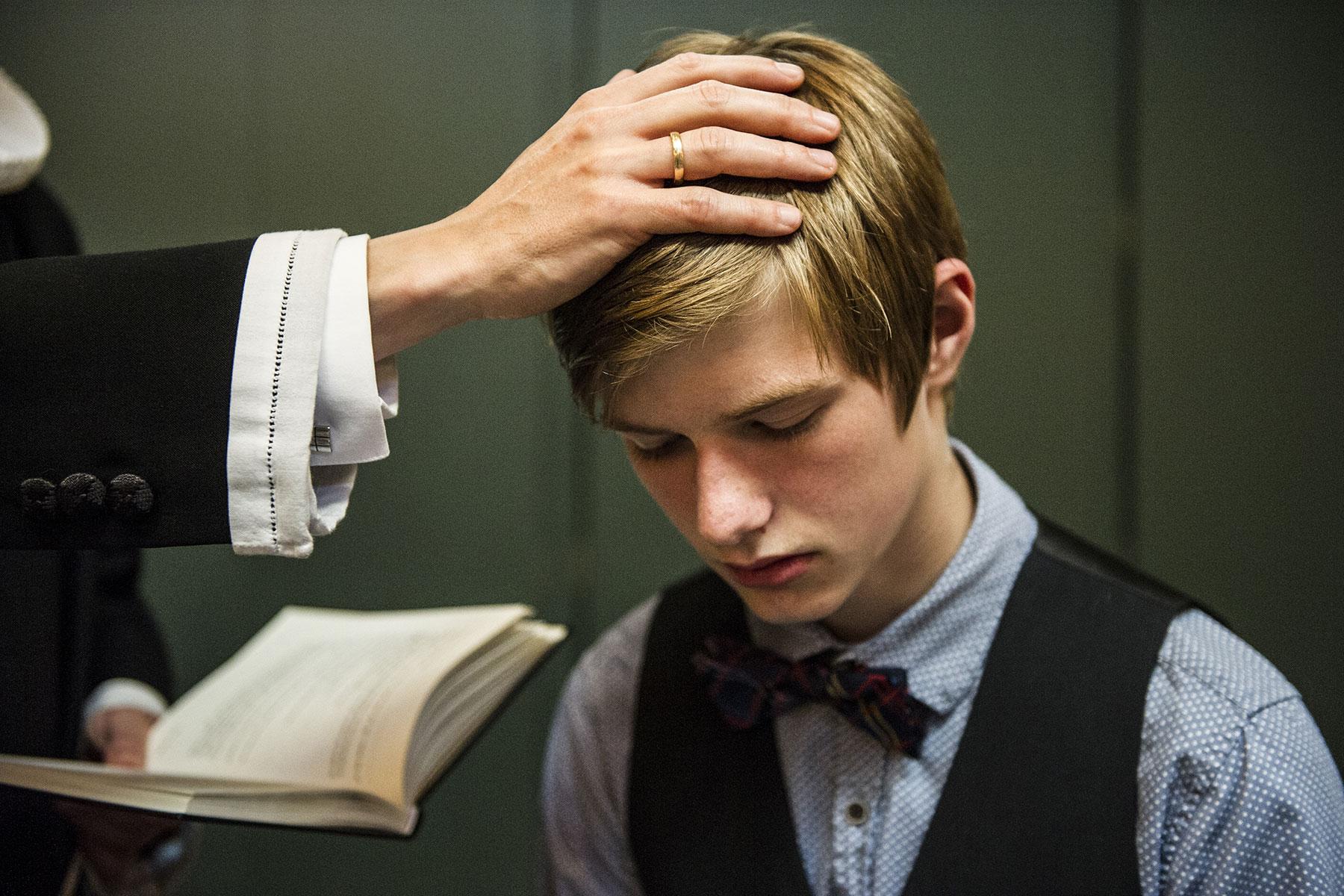Nordic churches conclude project on “Baptism in Times of Change”

One of the findings of the âBaptism in Times of Changeâ project in the Nordic region is that numbers of infant baptisms are declining but the baptisms of youth and adults are increasing. Photo: folkekirken.dk
Learning about differences encourages reflections on the familiar
(LWI) – The project “Baptism in Times of Change”, conducted by five member churches of The Lutheran World Federation’s (LWF) in the Nordic region, concluded with an online consultation on 19 and 20 January. Recommendations presented included exploring variations in baptismal practice and special services and liturgies for different contexts and age groups.
“It has been encouraging to experience new ways of working together as churches,” said Prof. Dr. Harald Hegstad. He teaches at the MF Norwegian School of Theology, Religion and Society, and has served as “Baptism in Times of Change” project manager. “The project has brought together practitioners, church leaders, and researchers in a fruitful exchange of insights and experiences,” he said.
The “Baptism in Times of Change” project conducted from 2020 to 2022 was a pilot project of an overarching initiative, “Churches in Times of Change”, which focuses on understanding changes in ecclesial practice and theology in the Nordic region. The churches participating in the initiative are the Evangelical Lutheran Church in Denmark, Evangelical Lutheran Church of Finland, The Evangelical Lutheran Church of Iceland, Church of Norway, and Church of Sweden.
“Even if the situation in the Nordic setting is similar, there are also many differences,” explains Hegstad. Learning about these differences sheds new light on one’s situation. For example, it has been taken for granted that baptisms are part of the main Sunday service in some churches. However, baptisms take place in homes or dedicated services in others. “To learn that other churches have a differing practice has led to renewed reflection on own practices,” said Hegstad.
The COVID-19-pandemic has also affected baptism practices. “The number of infant baptisms declined at the beginning of the pandemic, and we do not know whether the number will return to a ‘normal’ level afterward,” said Hegstad. “Instead of baptisms in public services, the number of private baptismal services has increased. It remains to be seen whether the pandemic caused permanent changes in baptismal practices in the Nordic churches.”
Recommendations for different contexts
A primary outcome of the project is a list of 18 recommendations. They take as a point of departure the themes identified in an annotated bibliography with contributions from all churches, identify challenges and relevant questions, and point to examples of “good practices” concerning baptism, without necessarily entailing endorsement from all participants. Furthermore, the recommendations are not binding policies for participating churches as each national group needs to continue working on utilizing the recommendations in their context and constituency.
An important side-effect of the project has been that it strengthened contacts between the churches at the leadership level and among practitioners. “By sharing common concerns and experiences, we have come closer to each other,” said Hegstad. Much parallel work was done in the Nordic churches, “but we have not always been able to learn from each other sufficiently.” In addition, using English as a common language for the project helped cross language barriers.
“What made this project unique is the collaboration of LWF member churches in the region,” said Rev. Dr Ireneusz Lukas, LWF’s Regional Secretary for Europe. “This collaboration on a fundamental topic for the present and future of every church has shown the potential of exchanging ideas, experiences, and creative theological discussion.”
Lukas also welcomed that the outcomes are available in English on the “Churches in Times of Change” website and could be utilized by churches in other regions.
The concluding online consultation of “Baptism in Times of Change” gathered about 50 practitioners, researchers, and church leaders. The outcomes were based on information collected and collated by the researchers and on nine webinars on baptism conducted in 2021. They focus on four aspects of the baptismal landscape: Statistics and societal change, theologies of baptism, communicating baptism, and the baptismal practice.
The Nordic churches will develop further projects under the “Churches in Times of Change” umbrella using the same methodology. “My advice to the LWF and member churches wanting to use this approach is to utilize an online format and to facilitate conversations between practitioners, church leaders, and researchers on themes that are vital to the churches and the Lutheran communion,” Hegstad concludes.
By LWF/A. Weyermüller





